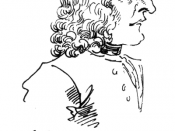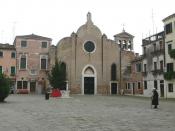A comparison between three Vivaldi movements
From L'estro Armonica
Op.III
Antonio Vivaldi was one of the most prominent composers of the Baroque period. He lived in Venice, Italy for the duration of his life (1678-1741) and taught music at an all-girls orphanage for most of it. He was also an accomplished violinist and performed most of his works. He composed many Concertos, Concerto grossos, Religious works and Operas in his life. From this vast array of beautiful music I have chosen to compare and contrast the three movements of Concerto in la Minore op.III n.6 which were Composed in 1711.
The first and last movements have a great deal in common; both are written in the minor, beginning in A minor. Both are also simple time, however the first movement is in 4/4 and the third in 2/4, they are both fast pieces but the first is marked Allegro, whereas the third is Presto.
However the second movement has a very different feel, although it is also in simple time, 4/4, it begins in the key of C minor and is much slower, Largo, and it is also marked cantabile (or singing style). With the rest of the ensemble, consisting of only two violin parts and a viole (or viola) playing sempre.
The first movement begins with all the violins playing in unison, stating the subject, shortly after the rest of the string orchestra enter , firstly the violoncelli (or cello) then Contrabbassi (or double bass) and the viole (or viola). A cembalo (or harpsichord) enters to form the basso continuo, there is also figured bass in the score. The third movement also begins without the full string orchestra, but it is the other way around, all instruments (same as movement one) play a single cord to form...


